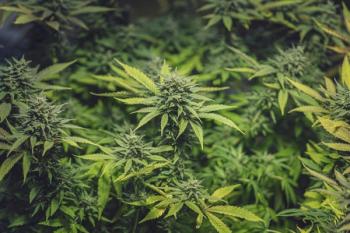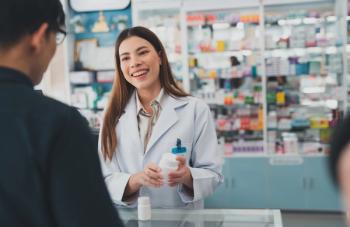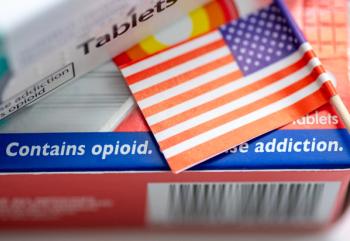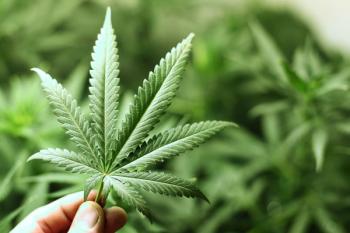
- Drug Topics July 2021
- Volume 165
- Issue 7
Naloxone: A Primer for Pharmacists
Become an expert in naloxone to help educate patients.
In 2019, almost 50,000 people in the US died as a result of opioid overdose; this number includes events involving prescription pain medications, heroin, and synthetic opioids like fentanyl.1 The CDC estimates the annual economic burden of prescription opioid misuse at $ 78.5 billion.1 Pharmacists can be a valuable resource to patients and the community as a whole by learning about naloxone and how to treat an opioid overdose, as well as recommending naloxone to patients and counseling on its use.
This article is the first of a 2-part series on naloxone education and patient counseling for pharmacists.
What Is Naloxone?
Naloxone is an opioid antagonist. It attaches to opioid receptors, rapidly reversing an opioid overdose. Naloxone quickly restores normal breathing in a patient whose breathing has slowed or stopped because of an opioid over- dose. Naloxone is effective only in opioid overdose due to drugs such as oxycodone, hydrocodone, codeine, heroin, fentanyl, and morphine.
Naloxone does not treat overdoses of nonopioid medications, and it does not have an effect on someone who has not taken opioids.2
Risk Factors for Opioid Overdose
Although any opioid use can lead to overdose, some factors that may increase overdose risk include:
- combining opioids with alcohol or other drugs (such as benzodiazepines);
- taking a high daily dosage of opioids;
- taking more opioids than prescribed by the physician;
- taking illegal opioids that could contain unknown substances;
- having sleep apnea;
- having impaired hepatic or renal function; and • being older than 65 years.
Signs of an Opioid Overdose
Signs of an opioid overdose include:
- slowed or shallow breathing (or no breathing);
- pinpoint pupils (small, constricted pupils);
- falling asleep;
- loss of consciousness;
- choking or gurgling;
- limp body; and
- skin that is pale, blue, and/or cold.
In the event of an opioid overdose (or suspected overdose), administer naloxone and call 911. Keep the person awake and talking. Another naloxone dose (or more) may be necessary. Stay with the person until emergency help arrives.3,4
Does Naloxone Require a Prescription?
Results of studies show that naloxone distribution programs and naloxone access laws reduce opioid overdose deaths without increasing opioid use. Estimates suggest that when laypersons and emergency personnel have naloxone, 21% of opioid overdose deaths could be avoided.5
Although naloxone is a prescription drug, many pharmacies in the United States have naloxone available with- out a prescription through a standing order. Law enforcement or emergency medical services personnel can work with local health departments to access naloxone.6
Available Naloxone Formulations
Naloxone is available in 3 FDA-approved forms:
1. Prepackaged nasal spray
Naloxone nasal spray (Narcan; Sankyo) is sprayed into 1 nostril while the patient lies on their back.
Dosage and administration: One spray into 1 nostril, and then call 911. If the patient responds and goes back into respiratory depression before help arrives, or if the patient does not respond after 2 to 3 minutes, give another dose in the other nostril using a new naloxone nasal spray. If there is still no response and more doses are available, give additional doses every 2 to 3 minutes using a new naloxone nasal spray with each dose, and alternate nostrils each time, until the EMS arrives.7
2. Autoinjection
Naloxone autoinjector (Evzio; Kaleo) is a prefilled autoinjection device that is injected into the thigh muscle. When it is turned on, a recording gives instructions.
Dosage and administration:
Administer 1 intramuscular (IM) or subcutaneous (SQ) injection into the thigh (through clothing if necessary), then call 911. If the patient does not respond and more doses are available, doses may be repeated every 2 to 3 minutes until EMS arrives. If the patient responds and goes back into respiratory depression before EMS arrives, give another dose.8
3. Injection
Naloxone injection is given by a health care professional. The route of administration may be intravenous (IV), IM, or SQ. The IV route is preferred because of its faster onset.9
Depending on the opioid, dose, and route of administration that caused the overdose, the naloxone dose will vary and may require repeat doses.
Each patient who receives a naloxone product, regardless of whether it is an autoinjector or nasal spray, should receive training, read the instructions, and check the expiration date. These 2 dosage forms were designed to be easy to use by anyone in an emergency situation.6
Adverse Effects
Naloxone may cause withdrawal symptoms. Although uncomfortable, withdrawal symptoms are not life-threatening. They may include headache, blood pressure changes, tachycardia, sweating, nausea, vomiting, tremors, irritability, nervousness, aggressive behavior, body aches, fever, runny nose, and sneezing.6-8
References
- Opioid overdose crisis. National Institute on Drug Abuse. Updated March 11, 2021. Accessed May 23, 2021.
https://www.drugabuse.gov/drug-topics/opioids/opioid-overdose-crisis - Naloxone. National Institute on Drug Abuse. Updated September 2019. Accessed May 23, 2021.
https://www.drugabuse.gov/publications/drugfacts/naloxone - Preventing an opioid overdose. Centers for Disease Control and Prevention. Accessed May 23, 2021.
https://www.cdc.gov/drugoverdose/pdf/patients/preventing-an-opioid-overdose-tip-card-a.pdf - Having naloxone on hand can save a life during an opioid overdose. FDA. Updated December 11, 2019. Accessed May 23, 2021.
https://www.fda.gov/consumers/consumer-updates/having-naloxone-hand-can-save-life-during-opioid-overdose#:~:text=Everyone%20who%20overdoses%20with%20opioids,by%20anyone%2C%20even%20a%20bystander . - Naloxone for opioid overdose: life-saving science. National Institute on Drug Abuse. Updated March 2017. Accessed May 23, 2021.
https://www.drugabuse.gov/publications/naloxone-opioid-overdose-life-saving-science#ref - Opioid overdose reversal with naloxone (Narcan, Evzio). National Institute on Drug Abuse. Updated February 20, 2020. Accessed May 23, 2021.
https://www.drugabuse.gov/drug-topics/opioids/opioid-overdose-reversal-naloxone-narcan-evzio . - Label: Narcan–naloxone hydrochloride spray. DailyMed. Updated March 25, 2021. Accessed May 23, 2021.
https://dailymed.nlm.nih.gov/dailymed/drugInfo.cfm?setid=724df050-5332-4d0a-9a5f-17bf08a547e1 - Label Evzio: naloxone hydrochloride injection, solution. DailyMed. Updated April 5, 2021. Accessed May 23, 2021.
https://dailymed.nlm.nih.gov/dailymed/drugInfo.cfm?setid=5fbe8d17-a72f-406d-a736-48e61620f9d8 - Label: Naloxone hydrochloride injection. DailyMed. Updated March 18, 2020. Accessed May 23, 2021.
https://dailymed.nlm.nih.gov/dailymed/drugInfo.cfm?setid=b1303f15-c48b-a44d-b28a-72f370094e02
Articles in this issue
over 4 years ago
Novel Antifungal Treatment Approved for Vaginal Candidiasisover 4 years ago
What I Learned From 40 Years in Pharmacyover 4 years ago
The Evolution of Pharmacogenomicsover 4 years ago
Lessons Learned from the COVID-19 Vaccine Rolloutover 4 years ago
Childhood Vaccines During COVID-19 and Beyondover 4 years ago
Irritable Bowel Syndrome: A Look at the Treatment LandscapeNewsletter
Pharmacy practice is always changing. Stay ahead of the curve with the Drug Topics newsletter and get the latest drug information, industry trends, and patient care tips.


















































































































